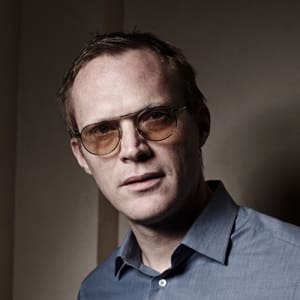
Lon Chaney
Lon Chaney was an actor known for his use of makeup to great effect in such films as The Phantom of the Opera and The Hunchback of Notre Dame.
Synopsis
Born to deaf parents in Colorado in 1883, actor Lon Chaney Sr. was a master of pantomime on the big screen during the silent-film era. He played numerous supporting roles until The Miracle Man (1919) made him a star. Known as the "Man of a Thousand Faces," Chaney was famous for his ability to transform himself through the use of makeup. He often played grotesque or dual characters in films directed by Tod Browning, including The Unholy Three. He is best known for his performances in The Hunchback of Notre Dame and The Phantom of the Opera. Chaney died in 1930 in Los Angeles, California.
Early Life
Lon Chaney was born on April 1, 1883, in Colorado Springs, Colorado. He was one of four children born to deaf parents, and some attribute his later success with pantomime to his early efforts to communicate with his parents through sign language. Chaney dropped out of fourth grade to spend several years caring for his mother after she became ill, and in his early teens got his first taste of the theater while working as a prop boy at a local opera house.
In 1902, Chaney took his first steps toward a career in acting, appearing in a play that he co-wrote with his brother. He would spend the next several years on the vaudeville circuit, further honing his skills as a performer. During his travels, he met a young singer named Cleva Creighton, whom he married in 1905. The couple had one son, Creighton, who would later be known as Lon Chaney Jr. Their union, however, was not a happy one. In 1913, Cleva attempted suicide by drinking poison in a theater where Lon was working. She survived the incident, but their marriage did not, and Lon went on to raise their son as a single father. Cleva's dramatic gesture also damaged Lon's theatrical career, forcing him to turn to the emerging world of cinema.
'Man of a Thousand Faces'
By the time his theater career began to flounder, Chaney had already begun to work as an extra for Universal Studios and appeared in countless films. However, his breakthrough role came with the 1919 film The Miracle Man, in which he portrayed a con man known as the Frog who pretends to be disabled. That same year, Chaney worked with director Tod Browning on The Wicked Darling, the first of 10 films the pair would make together over the next decade.
With nearly every role, Chaney sought to use his skill with makeup and physical transformation to make his characters unique. He went to great physical lengths for The Penalty (1920), using a special harness to bind his legs to play a double amputee. In 1923, Chaney starred as the title character in The Hunchback of Notre Dame. To transform himself into Quasimodo, Chaney wore a prosthetic hump that weighed more than 50 pounds. The film was wildly successful and became one of the top movies of the year. Two years later, Chaney played another of his most famous roles—the disfigured title character in The Phantom of the Opera (1925). That same year, he also worked with Browning on The Unholy Three. He followed with the 1926 military movie Tell It to the Marines, in which he did not make use of his trademark makeup techniques.
In 1927, Chaney appeared as an armless man in the Browning-directed The Unknown, which also featured a young Joan Crawford. That same year, Chaney starred in the horror mystery London After Midnight. In The Big City (1928), he played a crime boss. Another memorable film from his later career was West of Zanzibar (1928), a drama about a magician's revenge on those who wronged him.
Around this time, the movie industry was changing with the addition of sound to film. Chaney initially resisted the "talking" pictures and worried that he wouldn't be able to transform his voice the way he altered his image for each part he played.
Death and Legacy
In 1930, Chaney used five different voices for a remake of his earlier film The Unholy Three. The movie would be his one and only talking film. He suffered from bronchial cancer and spent his final days in Los Angeles's St. Vincent Hospital.
Chaney died of a throat hemorrhage on August 26, 1930. He was only 47 years old. A veritable who's who of Hollywood turned out to pay their respects to the talented performer. According to the New York Times, honorary pallbearers included movie mogul Louis B. Mayer, producer Irving G. Thalberg, actor Lionel Barrymore and comedian Jack Benny. Chaney was survived by his son and his second wife, Hazel, whom he had married in 1915. After Chaney's death, his son followed in his footsteps and changed his name to Lon Chaney Jr. He is best remembered for such horror classics as The Wolf Man (1941).
As a character actor, nobody has ever come close to Chaney. Making more than 150 films during his career, he displayed his trademark intensity and transformative powers in every role he brought to life. According to the Los Angeles Times, Joan Crawford once described him as "the most intense, exciting individual I'd ever met, a man mesmerized into his part."
2Gallery2 Images




